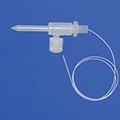|
| Featured E-Book |
|
| Advances In Spectroscopy: The Scix 2019 Preview and Companion Guide |
|
Prepared in collaboration with the SciX conference organization, this e-book presents interviews with five analytical spectroscopists who will give talks at this year's event taking place on October 13–18, 2019, in Palm Springs, California.
Read more |
|
|
|
| Advertisement |
|
|
|
In this Executive Summary, learn how MS/MS simplifies ICP-MS setup and operation by making reaction gas methods more consistent and reliable.
Download Now |
|
|
| Articles |
|
| Mid-IR Spectroscopy as a Primary Tool in Carbon Biogeochemistry Research |
|
Mid-infrared spectroscopy is applied as a primary technique to better understand the bio- and ultraviolet-transformation of soil microbial biomass. Soil microbial biomass constitutes as much as 50% organic carbon in soil organic matter, and therefore plays a crucial role in soil-atmospheric chemistry. In this study, the spatial distribution of microbial-derived organic structures on kaolinite and montmorillonite clay minerals was investigated.
Read more |
|
|
|
| Advertisement |
|
|
|
Thursday, September 26, 2019 at 11am EDT| 8am PDT| 4pm BST| 5pm CEST
Register Now |
|
|
|
| Seven Essential Steps for In Situ Reaction Monitoring |
|
In situ reaction monitoring using spectroscopy can be very useful in an industrial laboratory, but there are many factors to take into account. Here are seven essential steps to follow when considering or implementing the use of this approach.
Read more |
|
|
|
| Advertisement |
|
|
|
Wednesday, September 25, 2019 at 11am EDT | 8am PDT | 4pm BST | 5pm CEST
Register Now |
|
|
|
| Native Measurement of a Biotherapeutic without Interference from Excipients Using Microfluidic Modulation Spectroscopy |
|
A new infrared spectroscopy technique, microfluidic modulation spectroscopy (MMS), delivers reproducible protein characterization over close to four orders of magnitude in protein concentration (from 0.1 to 200 mg/mL). This technique characterizes samples from the earliest stages of development through to manufacture.
Read more |
|
|
|
| Advertisement |
|
|
|
Thursday, September 19, 2019 at 11am EDT | 8am PDT | 3pm GMT | 4pm CET
Register Now |
|
|
|
| A Short Guide for Raman Spectroscopy of Eukaryotic Cells |
|
Raman spectroscopy has become a highly popular and powerful approach to conduct label-free assessment of molecular information of biological and clinical samples. Here, we provide a brief outline of what to consider for the application of Raman spectroscopy for the characterization of eukaryotic cells.
Read more |
|
|
|
| Advertisement |
|
|
|
Tuesday, September 17, 2019 at 2pm EDT | 1pm CDT | 11am PDT
Register Now |
|
|
|
| Featured PRODUCTS |
|
 |
|
| BRAVO Handheld Raman Spectrometer |
|
The BRAVO Handheld Raman Spectrometer provides raw material identification and validation. BRAVO's unique, handheld design is not only convenient, fast, and reliable – it is portable for the laboratory or in the field.
Learn more |
|
|
 |
|
| Modular Raman Spectrometer |
|
|
Through Sept. 28, 2019, purchase a QE Pro-Raman spectrometer optimized for 785 nm Raman excitation and get discounted pricing, plus free shipping and software. Local offers may vary. Learn more |
|
|
 |
|
| C-Flow PFA Microconcentric Nebulizers |
|
C-Flow nebulizers offer superior sensitivity and tolerance to dissolved. The unique, two-piece design, is made possible by Savillex's expertise in fluoropolymer injection molding, and allows for more precise manufacture, resulting in the tightest uptake rate specifications.
Learn more |
|
|
 |
|
|
|
 |
|
| Cobolt addresses Raman with even more wavelengths |
|
|
Cobolt AB, a part of HÜBNER Photonics, continues to address the Raman spectroscopy market with the addition of 633 nm and 785 nm single transverse mode (STM) on the 08-01 Series, with the aim to secure the market position as a major supplier of all laser wavelengths to the high resolution Raman market. The Cobolt 08-NLD 633 nm and Cobolt 08-NLD 785 nm are frequency stabilized, Narrow linewidth Laser Diodes (NLD) with up to 30 mW and 120 mW respectively.
Learn more |
|
|
|
|
|
| On Demand Webcasts |
|
|
|
|
|
|
|
|
|
|



